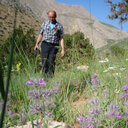Chemical Composition of East Asian Invasive Knotweeds, their Cytotoxicity and Antimicrobial Efficacy Against Cariogenic Pathogens: An In-Vitro Study.
키워드
요약
BACKGROUND Giant knotweeds originating from East Asia, such as Reynoutria japonica, and Reynoutria sachalinensis, and their hybrid such as Reynoutria x bohemica, are invasive plants in Europe and North America. However, R. japonica is also a traditional East Asian drug (Polygoni cuspidati rhizoma) used in Korean folk medicine to improve oral hygiene. The aim of this study was to evaluate the antibacterial activity of acetone extracts of Reynoutria species against dominant caries pathogen such as Streptococcus mutans and alternative pathogens, as well as characterize the phytochemical composition of extracts and examine their cytotoxicity. MATERIAL AND METHODS Ultrasonic extraction was used to obtain polyphenol-rich extracts. The extracts were characterized by HPLC-DAD-ESI-MS. To test bacterial viability, the minimal inhibitory concentration (MIC) and minimal bactericidal concentration (MBC) against S. mutans, S. salivarius, S. sanguinis, and S. pyogenes were determined. The cytotoxicity of the extracts to human fibroblasts derived from gingiva was evaluated using the MTT (3-(4,5-dimethylthiazol-2-yl)-2,5-diphenyltetrazolium bromide) assay. RESULTS The R. japonica extract had the highest bacteriostatic and bactericidal activity against pathogens causing caries, mainly dominant caries pathogen S. mutans (mean MIC 1000 μg/mL and MBC 2000 μg/mL), which was most likely associated with a higher content of stilbene aglycons and anthraquinone aglycons in the extract. Moreover, the R. japonica extract demonstrated the lowest cytotoxic effect on human fibroblasts and exhibited cytotoxic activity only at the concentration causing the death of all S. mutans. CONCLUSIONS The results indicate that the R. japonica acetone extract can be considered as a natural, antimicrobial agent for caries control.


